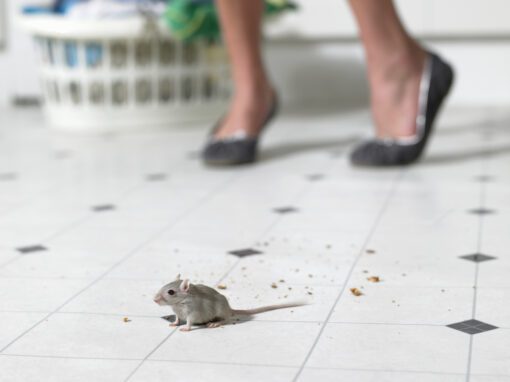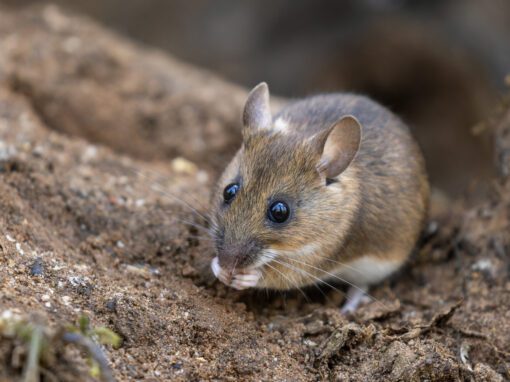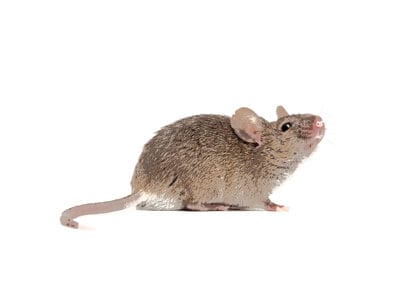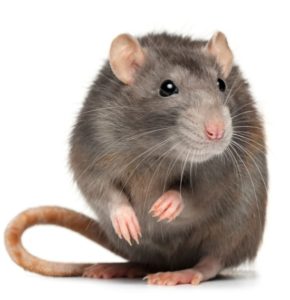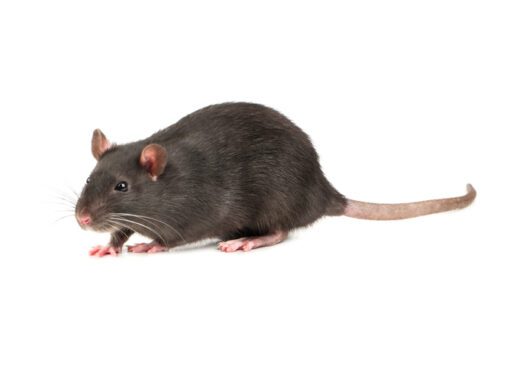Knowing your pest makes all the difference in identifying, preventing, and controlling rodent issues. Different rodent pests vary in their biology and behavior, therefore requiring differing methods of control. This blog post takes a closer look at various species of mice and rats and explains their differences and similarities.
Written by: Franklin Pest Solutions Technical Specialist, Allison Beach
What’s the difference between rats and mice?
Rats and mice are both destructive rodent pests, but have distinct biological and behavior differences that affect how pest control professionals might inspect and treat a home or building. First, let’s take a look at what they have in common.
SIMILARITIES between rats and mice
- Rats and mice have poor vision and are colorblind
- Their teeth never stop growing, so they will gnaw or chew on non-edible objects often to grind their teeth down
- They both forage for their food
- Rats and mice can play a significant role in spreading disease
Now let’s talk about how they’re different. The absolute biggest difference between rats and mice is their size. Rats are the much larger rodent of the two. This means that the evidence/destruction that rats leave tends to be larger than that of mice. There are other biological and behavioral things that set them apart. Check out the table below.
Differences between rats and mice
| Rats: | Mice: |
| · Large rodents that measure about 15 –18 inches long | · Small rodents that measure 1-7 inches in length |
| · Weigh about 19 ounces on average | · On average, weigh about an ounce |
| · Small, flat ears compared to their body | · Have big, floppy ears compared to their body |
| · Have hairless, pink tails | · Grow hair on their tails |
| · Generally social and tend to live/ nest together | · Generally antisocial and tend to live/nest alone |
| · More cautious compared to mice | · More curious compared to rats |
| · Omnivorous, but prefer foods with protein (meat, fish, pet food) | · Omnivorous, but prefer foods with grains and nuts (seeds, cereals) |
| · Can fit through holes the size of a quarter | · Can fit through holes the size of a dime |
| · Prefer to nest in underground burrows or lower levels of homes (basements, crawlspaces) | · Prefer to nest in higher levels of homes (attics, wall voids) |
Types of Rats and Mice In Our Area
Get familiar with the most common pest rodents we encounter on a regular basis here in the Midwest. These rodents vary individually in their habits, so it’s important to know the differences about these pests.
Deer mouse:
This mouse is found in more rural, wooded areas and prefers the outdoors. This small mouse is brown with a white belly and legs, with big ears and eyes. Deer mice like to nest outside in brush, leaf litter, or even hollowed-out logs. They might also be found nesting in fence posts, under decks, and in sheds or garages. Deer mice aren’t as common household pests as other mice but will still invade houses and cause damage.
Some mice in this group play an important role in the spread of Lyme Disease. These mice can carry the bacteria responsible for causing this disease. This means that ticks can “pick up” the bacteria from feeding on a white-footed mouse and transfer them to the next host they encounter (which might be a human or your dog).
House Mouse:
The house mouse is the most common pest mouse in the United States, as well as the Midwest. They are found in urban and rural areas where humans live and are known for invading and nesting in homes. House mice can also destroy crops in rural areas. This mouse is a brown or gray color all over with a long, hairy tail. House mice, unlike other mice, are semi social and will live and nest together. There is never just one.
Norway Rat:
Also called the brown rat, the Norway rat is one of the most common pest rats in the world. It is completely brown or gray in color and has a long, hairless tail. These rats essentially live anywhere humans are and pose a large pest issue in urban areas. In more rural places, the Norway rat will live and burrow in fields or wooded areas. In the city, Norway rats thrive through foraging for discarded food and trash and invading the lower levels of buildings and sewer systems. Norway rats typically nest in burrows underground, which can disturb landscaping. Sometimes, these rodents will invade and nest in the lower levels of buildings like basements and crawlspaces.
Roof Rat:
The roof rat, also called the black rat, is a dark brown or black color all around. Its body is smaller than a Norway rat, but roof rats have much longer tails. Roof rats are a little smaller than Norway rats, measuring 7-10 inches including their tails. Unlike the Norway rat, roof rats get their name from their tendency to climb and might make their nests in trees or the higher levels of buildings just as much as they are likely to nest near the ground. These rats tend to be a pest in the Southern and coastal United States but could still pose a threat to the Midwest. In medieval Europe, roof rats were the ones carrying fleas that contained the Black Plague, helping to spread this disease.
Rodents and Construction:
Construction affects everyone in an area, including rodents. It’s a common pest control myth that construction in all areas can “attract rodents.” The truth is actually quite the opposite. Construction anywhere, even development in more rural areas, can displace rodents and make them more likely to encounter humans or become pests. If someone is seeing rodents more often in an area where there’s heavy construction, it’s because the habitats of the rodents that have been there all along are changing.
One issue with urban rodent populations is the large amount of construction that goes on year-round in large cities. Vacant buildings, lots, and construction sites can provide rodents with a place to themselves to survive and reproduce with minimal human interaction. Tearing down buildings displaces rodent populations, causing them to wreak havoc by becoming pests to surrounding neighbors.
More Rodent Prevention Tips
“The best strategy in preventing rodents is to make your home/business as unattractive to them as possible.” – Allison Beach, Technical Specialist
This statement reigns true in every aspect of rodent prevention. This starts with exclusion, making sure rodents can’t invade structures by paying close attention to and sealing off entry points, mentioned in the previous blog. Pay extra attention to doors of any kind (including garage doors) to make sure there aren’t any gaps that rodents can sneak through. Purchasing a door sweep or fixing any gaps in a door seal will help.
Properly cleaning and sealing food and trash limits rodents’ access to food and gives them no reason to stick around. Part of this practice includes bird feeders. Having a bird feeder near your home can attract rodents, especially when birdseed is continuously being spread on the ground. Stopping bird feeding altogether, moving bird feeders away from structures, cleaning any spilled birdseed, and properly sealing birdseed bags can make your home or building less attractive to rodents. Maintaining landscaping around your home/business and paying attention to moisture levels can also discourage rodents from settling in and around homes and businesses. An easy way to rodent-proof your landscaping in an urban area is to use rocks or gravel instead of soil to discourage any Norway rat burrowing.
Taking proactive steps to discourage rodent infestations reduces dependence on rodenticides, which can be harmful to the environment if used excessively or incorrectly. For example, wildlife that eat rodents (hawks, vultures, cats, etc.) might consume a rodent that has been poisoned by rodenticides, passing the toxicity through the food web. It is important to leave this rodent treatment up to a professional, as do-it-yourself rodent control can easily backfire.

